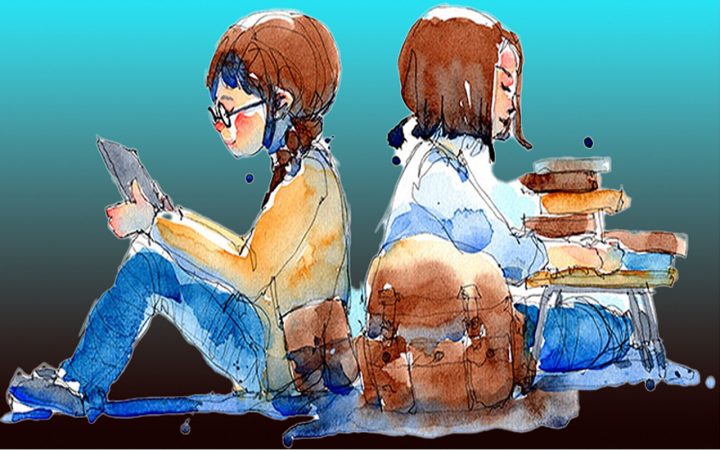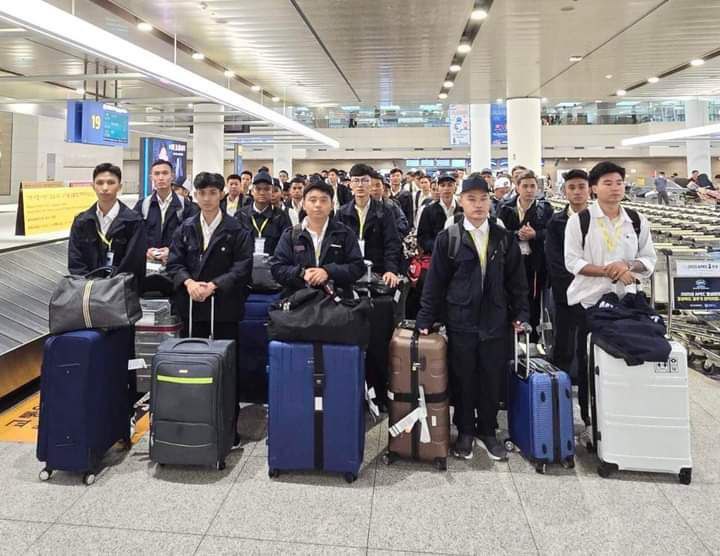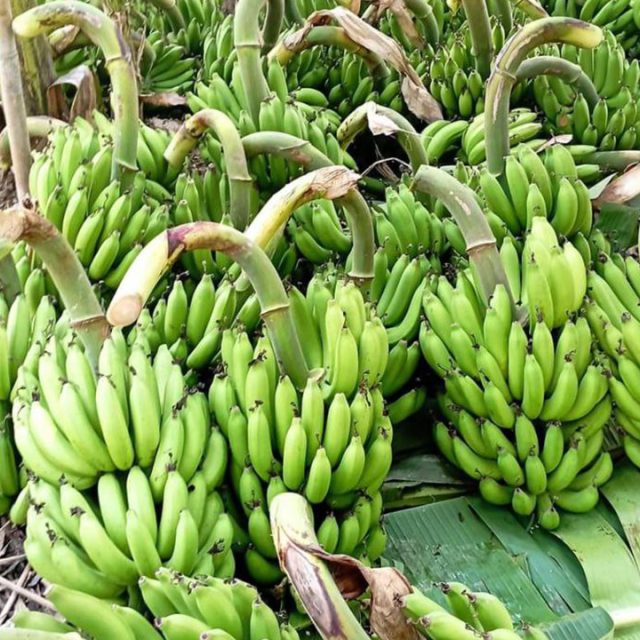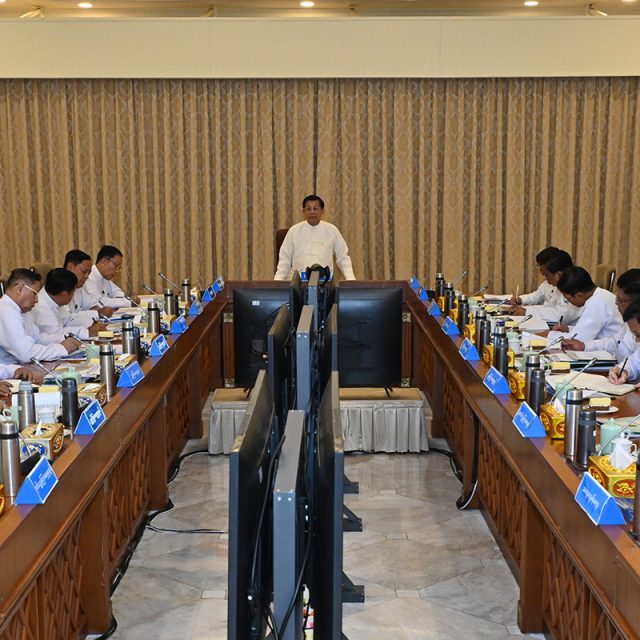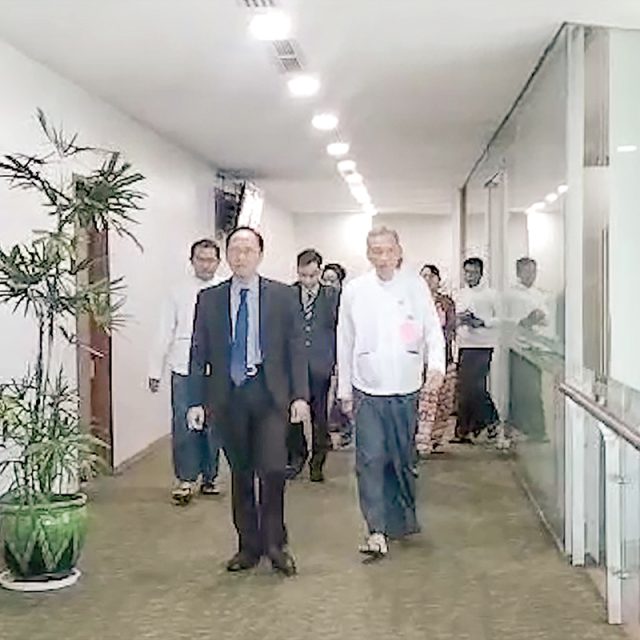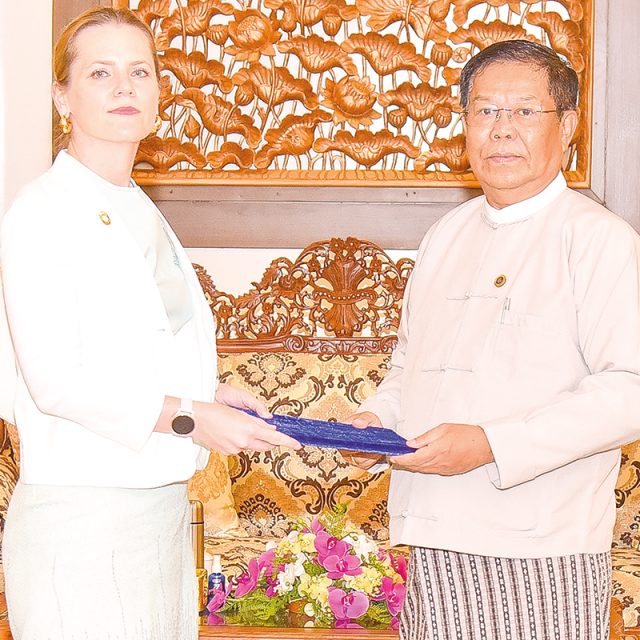Once, there was a real story in which a young man in his twenties and a lady who seemed to be his mother were among the passengers on an express bus. The young man had remained silent on the way before he produced a book out of a little bag, slinging it over his shoulder and started to write something. He then signed his name below when he finished.
After that, he turned a page over, wrote something down, and signed it again when he finished off. He was doing this over and over again all along the journey. He seemed to live, so to speak, in a world of his own, which was absolutely detached from the real world. A man sitting next to him was watching what he was doing, and a sense of eccentricity in the young man’s behaviour roused him to ask questions. “Are you writing poems?” asked the man.
The young man replied, “Yes”. “Which type of poem do you write?” “There are many types of poems, so one can write whichever way one likes.” “You write poems of your own then. How many poems have you ever written?” The young man hesitated for a split second and then said, “About a million which I keep in wooden boxes at home”. (At this point, I would say even the renowned poet Saya Tin Moe, who passed away at the age of 73, wrote about 2,000 poems throughout his career of six decades. Now, this young man in his twenties claimed to have written one million poems. This is too untypical, I suppose.)
The conversation went on. “A million? That’s too many. But what makes you keep your poems at home? Why don’t you send them to publishing houses to share with others?” “I want to, but I haven’t engaged any publisher yet. And my friends are copying my poems in their names. One day, I will go to Yangon and try to get my poems published.” At this point, his mother, who had made no comment from the start of this conversation, waved a hand to the man and spoke under her breath. “That’s why he dropped out of the university before he finished his second year. He didn’t attend his classes regularly, nor did he learn the lessons well. All he did was write poems day in and day out and finally dropped out of school.”
“Whilst other mammals match their water intake to their output, human beings match their output to their intake.” In a classroom at the University of Traditional Medicine, Mandalay, Lecturer Dr Myo Soe was giving a lecture on physiology to his second-year students. It was about the intake and output balance under the renal handling of water; that is to say, human beings, not like other mammals, excrete water according to the amount of water they take, while others take water according to their output. That means water output is directly proportional to the intake in humans; for instance, if the intake is 2500 ml per day, we should note that the output is going to be the same. In short, one may remain on typical water intake and output in a state of fluid balance. If this mechanism is interrupted by something irregular, the intake and output regulation will lose its balance; for example, a pure water deficit is seen where the intake is low.
“There are only two things you need to do if you want to write. Read and write. To write is to read and write”, Stephen King said in a public lecture.
Supposing that the body fluid balance can be used as a metaphor for Stephen King’s advice for young people, what we read is like intake and what we write, output. Is it also true that Stephen King is saying one cannot write unless he reads and writes? If it can be said so, output literally cannot be produced with no intake, just like the body fluid mechanism carried out in our body, where the output is directly proportional to the intake.
What if there is little or no intake at all? What will happen then?
As it goes in physiology, pure water deficit is said to be seen.
That young man on the bus was doing nothing but writing poems all the time, in as much that he could not perform his own duty of being a student, let alone reading. He would have been so obsessed with writing poems that he could not think of anything else. Obsession is, as it were, a state of walking a thin line between sanity and insanity. If he overuses the resources out of his brain when there is little or almost no reserve, what will happen to him, then? There is one thing for sure: that he will lose his balance, which would disturb the state of sanity. Of course, he could not be said to be totally insane, nor could he be said to be perfectly sane.
After repeating his conversation with the young man on the bus, my dad made fun of me because I also wrote verses like the young man. “Well, you too, my pet! It is better not to write too many poems. I don’t want my only child to go crazy,” Dad teased me. “Come on, Daddy! You don’t need to worry about that. I know exactly what keeps me sane”, I retorted with a laugh.
We have to read before we write if we are desperate to write. Suppose we do not match our output to our intake. As physiology says, we make no difference, if I may say so, from other mammals like goats, sheep, cows, etc. Then, it would necessitate reading in order to widen the gap between those animals and humans since there is no living thing other than humans.
As writers, we often find ourselves caught in a delicate dance between input and output. On one hand, we absorb information – reading books, articles, and poems – immersing ourselves in the rich tapestry of language and ideas. On the other hand, we create, weaving our own words, constructing narratives, and giving life to characters. This interplay between input (reading) and output (writing) is essential for our growth as writers.
Reading widely is the gateway to inspiration. When we read widely, we expose ourselves to diverse perspectives, styles, and genres. Consider a poet who immerses herself in classic sonnets, contemporary free verse, and ancient haikus. Each poem she reads becomes a brushstroke on her mental canvas, adding depth and nuance to her own work.
Beyond content, reading teaches us techniques. A novelist might study how Margaret Atwood builds suspense or how Hemingway crafts concise dialogue. These techniques seep into our subconscious, influencing our writing style. Think of it as a chef tasting various cuisines to refine their own recipes.
Imagine a novice writer named Alex. Alex devours fantasy novels, science articles, and historical biographies. With each book, Alex absorbs new vocabulary, sentence structures, and storytelling devices. Alex’s input phase is like gathering ingredients for a grand feast.
Writing is alchemy. We take raw elements – ideas, emotions, and experiences – and transform them into sentences, paragraphs, and chapters. This act of transmutation requires focus and discipline. It’s where the magic happens.
Writers rarely get it right on the first try. We revise, rewrite, and polish. Our initial output is like a lump of clay; subsequent drafts mould it into shape. The more we write, the better we become at this sculpting process.
Our poet friend, let’s call her Maya, sits by the window with her notebook. She writes haikus inspired by cherry blossoms, elegies for lost love, and odes to moonlight. Each poem is an output — an offering to the world. But Maya knows that her poems improve when she revisits them, chiselling away excess words, refining metaphors, and finding the perfect rhythm.
Just as too much sugar leads to a toothache, excessive input can overwhelm us. We risk becoming perpetual readers, forever postponing our own creations. Set boundaries: allocate time for both reading and writing.
The blank page is intimidating, but it’s also an invitation. When we shift from input to output, we step onto the dance floor. We waltz with our ideas, twirl with our characters, and let our words pirouette. The more we dance, the more graceful our steps become.
Input and output are symbiotic. Like inhaling and exhaling, they sustain our creative lungs. So, dear writer, read voraciously, write fearlessly, and find your balance. Remember, the dance awaits.
Finding Balance in Creativity
- August 07, 2024
- 28
